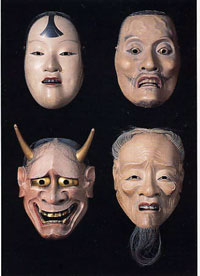The differing images of women in art is fascinating. One of the factors that creates this difference is the cultural background of the artist. Each of these artists comes from different cultural background, although some of their heritages overlap slightly. (How men depict women and how women depict themselves also varied widely, so for the purposes of this exhibit all of the artists are women.)

"Birch Bark Woman" by Lisa Fifield, 22"x30"
Lisa Fifield is a Native American artist. She is part of the Onelda Tribe of Indians living in Wisconsin. In this specific piece the strong connection between human and the land, which is important to her culture, is very clear. Man, or woman in this case, literally becomes part of nature, supporting the world around them while also benefitting from the connection. There is also a sense of strength and continuity in the symbol of the tree, it shows how this relationship is not a new one but a full grown, well developed connection.

"Birth of a Star" by Mariko Mori, Digitally manipulated photograph, 1995
Mariko Mori is a Japanese born artist who did some of her art studies abroad in London. Most of her pieces are digitally altered photographs, but she also does installations that border on Performance Art. Her work is an intriguing mixture of popular culture, Eastern versus Western ideology, and female identity. Originally a model, her images place versions of herself in settings that illustrate how plastic and unlife-like is each stereotype. In this image Mori has dressed herself to resemble an Anime character and has surrounded herself with equally manufactured plastic spheres. The image is highly manufactured, but the title hints towards cosmology and how popular culture relates in the overall arch of time.

"Nirvana" by Mariko Mori, Digitally manipulated photograph, 1996-7
Juxtapose the earlier piece with this much more traditional rendering of her culture. This shows how religion has impacted her life, and how she sees herself participating with religion. Careful attention will show that both of the figures are the artist, and the only difference in appearance is the outfit and setting.

"Root of All Eves" by Wengechi Mutu, Mixed media, 2010
The last artist is Kenyan born Wengechi Mutu. Mutu grew up in Kenya for most of her life, but attended the last years of her schooling in Great Britain and America. Her pieces are compilations of her native mythology, Westernization, and cultural depictions of black women. She has an entire series (not this one) where she creates figures with images of traditionally dressed African women and images of black women in porn magazines. The women in these three pieces are made of various magazine cutouts, ink, and collages of beads, fur, etc. The figures are both gorgeous and grotesque, and their reinterpretations of various stories slightly unsettling. Her piece, Root of All Eves, is her variation on the Biblical figure Eve and the association of women with evil. Her version also poses the question of who exactly is the evil figure in the relationship, Eve or the child that she is begetting. Her other piece, Humming, has an interesting contrast between animal and woman. The figure is the first thing that attracts the eye, leading the viewer to mistakenly believe, for a second, that she is the humming bird mentioned. A closer look, however, shows that bird is actually over on the left of the painting. Mutu uses animal print to suggest a connection between fashion (the civilized world) and animalism (the uncivilized world) and how society wants women to be both. Her last piece, Oh, Madonna!, plays again with the rigid roles placed on women. There are still animal references with the feather boa, but the most important part of this piece is the woman’s pose. We have a piece named after the Virgin Mary but in the pose of a centerfold. This is the traditional contradiction in the depiction of women. Either a woman is the Virgin or she’s the Whore, but rarely is she both. Mutu is challenging this rigid stereotyping with her art, and, personally, I think she’s doing an amazing job.

"Humming" by Wengechi Mutu, Mixed media collage, 2010

"Oh, Madonna!" by Wengechi Mutu, Mixed media collage, 2010
Sources:
Fifield: http://www.arcticravengallery.com/lisafifield/lisa_fifield.html
Mori: http://www.artnet.com/Magazine/FEATURES/itoi/itoi11-20-01.asp
http://en.wikipedia.org/wiki/Mariko_Mori
Mutu: http://www.gladstonegallery.com/mutu.asp?id=2119


















